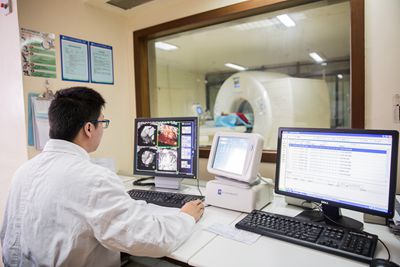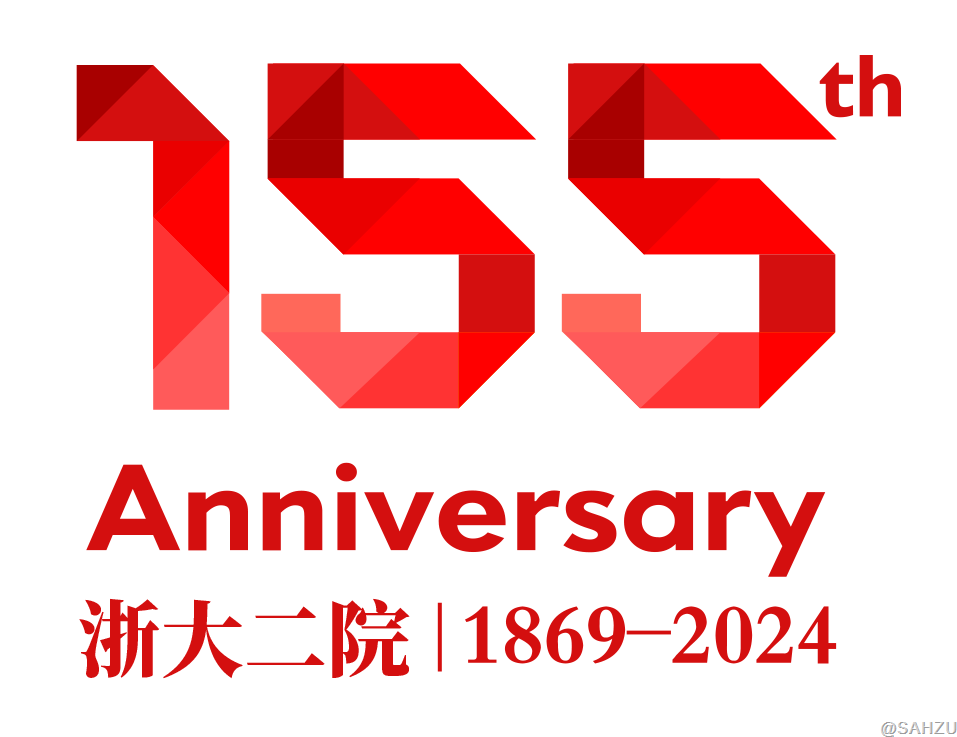

By scanning a QR code on her medical report, Ms. Pu instantly received her brain MRI result and all the MRI images on her mobile phone. “You only need your phone to scan the code and you can see the results. It’s so convenient!” said Ms. Pu.
For long time, thick stacks of medical imaging films are what Chinese people bring with them to see doctors. But sometimes, films could be sticky and damaged due to their old age, which could disturb doctors’ judgement of diagnosis. With this new digital imaging service, neither patients nor doctors need to worry about medical images anymore.
Medical images almost become “alive” in phones. “Look! I could adjust the image’s size, brightness, shade on the mobile phone,” said Dr. LIU Jin, chair of SAHZU Geriatrics. “Even a 3D image could be generated in the system. Doctors won’t miss the smallest disease focus.” Dr. LIU quickly decided a treatment plan after reviewing the images on his patient’s phone.
Digital images are digital films stored in Cloud, also called Cloud Films. Digital imaging service provides patients with a digital film, an exam report and the complete DICOM file from the examine. Every patient at SAHZU will have their individual space in the Cloud to store their medical images which could be retrieved for review and downloaded by scanning the QR code on their paper report. This piece of electric medical records can be kept in Cloud for 15 to 30 years.
“After having X ray, CT or MRI examines at SAHZU, patients don’t have to bring home a large envelop enclosed with pieces of medical films, but digital images they can store in their phones for long time,” said Dr. ZHANG Minming, chair of SAHZU Radiology.
“Modern medical imaging techniques are developing so quickly that we see this as a big leap from X ray, CT and MRI to HD 3D digital motion images,” said Dr. DING Kefeng, Vice President of SAHZU. “Digital medical images are endowed with more information by advanced technology. On one hand, it makes it easier for patient referral and telemedicine and saves resources. On the other, it ensures the information exchange across hospitals and healthcare providers.”
Author: | Reviewer: | Editor: | Source: | Date:2019-09-23 | Views:![]()
88 Jiefang Road,Shangcheng District Hangzhou,China, 310009
1511 Jianghong Road,Binjiang District Hangzhou,China, 310014
300 Yuanju Road, Shangcheng DIstrict, Hangzhou
456 Qidi Road, Xiaoshan District, Hangzhou, China
1 Xihu Avenue, Shangcheng District, Hangzhou
Zijingang Campus of Zhejiang University, 866 Yuhangtang Road, Xihu District, Hangzhou
Please call +86-571-8971 3988 (8am-5pm, Monday through Friday)
Make an appointment online

The Second Affiliated Hospital
Zhejiang University School of Medicine
88 Jiefang Road, Hangzhou, China
+86-571-8731 5108
iao_sahzu@zju.edu.cn
The Needs of Patients and Customers Come First.
The Second Affiliated Hospital Zhejiang University School of Medicine
All Rights Reserved.

